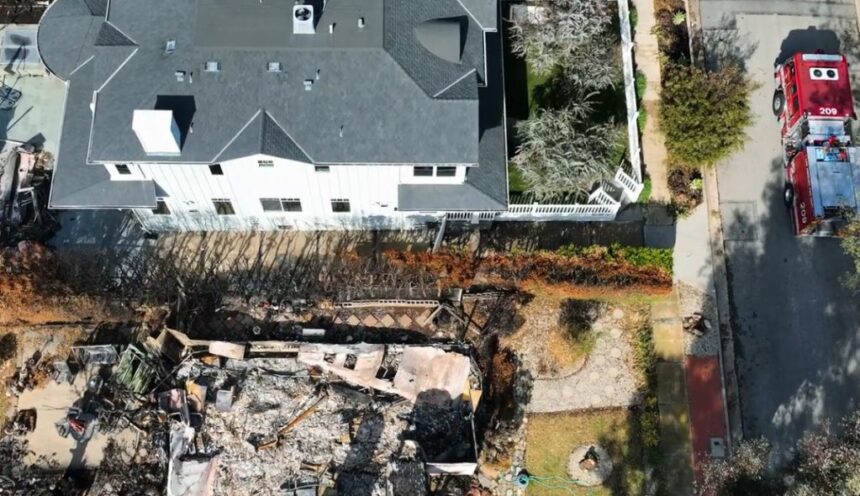The Nightmare Scenario: A Broken Dream
Selling a home is a complex and deeply personal journey, a blend of excitement for the future and a certain nostalgia for the past.
You’ve invested time and effort into preparing your space, from the fresh coat of paint on the walls to the carefully manicured lawn.
The prospect of an open house or a private showing is thrilling, a potential step toward a successful sale. Yet, lurking beneath that excitement is a subtle anxiety. What if a potential buyer, or worse, their child, accidentally damages your property?
This isn’t just about a minor scuff mark on the hardwood floor; it’s about a valuable antique, a priceless family heirloom, or even a piece of the home itself get broken. The questions flood your mind: Who is responsible? What are your rights? And how do you deal with the aftermath?
This blog post is designed to answer those very questions, transforming your anxiety into empowerment. We will navigate the often-murky waters of liability, insurance, and personal responsibility, equipping you with the knowledge to protect your property and your peace of mind.
Whether you’re a homeowner preparing for a showing, a real estate agent guiding clients, or a buyer on the hunt for your next great space, understanding the potential for a home item to get broken is a crucial part of the process.
The Aftermath of a Mishap: A Real-Life Horror Story
Imagine a bustling open house, filled with the hopeful chatter of prospective buyers. A young family is exploring your living room, their two children running excitedly from one end of the room to the other.
You’ve taken every precaution you can think of, discreetly placing your most fragile items in storage and leaving a polite note asking visitors to be mindful.
But in a sudden, heart-stopping moment, you hear it a loud, shattering crash, followed by the sound of a child’s cry. You rush in to find a scene of chaos.
Your vintage, hand-carved coffee table, an irreplaceable family heirloom passed down through generations, now lies in two distinct pieces on the floor. The child is thankfully uninjured, but the table, a cherished part of your family history, is irrevocably damaged.
Your mind races, a mix of panic and frustration. Who takes the blame for this? Are the parents liable for their child’s actions? What about the real estate agent?
Is the financial burden of this damage yours alone to bear? The parents are apologetic, the agent is mortified, and you’re left standing in the wreckage, the knot in your stomach growing tighter by the second. This scenario is far from hypothetical; it’s a reality that can quickly turn a hopeful sale into a legal and financial headache.
Panic and First Steps: What to Do Immediately
In the immediate aftermath of such an incident, it is natural to feel overwhelmed. However, the first and most crucial step is to remain calm and assess the situation with a clear head. Your priority should always be to ensure no one has been physically harmed.
Once you’ve confirmed that all individuals involved the buyers, their children, and the agent are safe, it is time to document the damage. This is a critical step that cannot be overstated.
You should use your smartphone to take a series of clear, high-resolution photos and videos of the broken item from multiple angles. This visual evidence will be invaluable later on. You should also make a mental note, or even better, a written note of the exact date and time of the incident.
Finally, you must obtain the full contact information of everyone present, especially the person or people who were directly responsible for the damage.
This thorough documentation is your most powerful tool, whether you are dealing with insurance companies, a real estate agency, or pursuing a direct claim with the liable party.
The Legal and Financial Ramifications
Once the immediate shock has worn off, the most pressing question emerges: Who will pay for the damage? The answer is not always simple, as liability can be a tangled web of legal principles, insurance policies, and personal responsibility.
Who’s Responsible? A Deep Dive into Liability
As a general rule, the person who caused the damage is the one who is liable. In our scenario, this would be the parents of the child who broke the table.
However, it’s rarely as straightforward as that. The real estate agent or their brokerage firm could also be held responsible if their negligence contributed to the incident.
For instance, if the agent failed to properly supervise the showing, or if they were aware of a pre-existing hazard and did not take measures to warn the buyers, they could find themselves on the hook.
It’s also important to understand the concept of a “duty of care” owed to visitors. A prospective buyer is considered an “invitee” on your property, meaning you have a higher obligation to ensure their safety. This doesn’t mean you are responsible for their clumsy actions, but it does mean you are responsible for fixing known hazards.
For example, if a wobbly railing gives way, causing a person to fall and injure themselves, you could be held liable. However, when a buyer’s child, through their own actions, causes a valuable item in your home to get broken, the liability typically rests with the child’s parents.
The Insurance Maze: Navigating Your Options
Navigating the world of insurance after such an incident can be incredibly confusing. Your homeowner’s insurance policy is your first line of defense, but it has its limitations. The cost of replacing the broken item might fall below your policy’s deductible, making a claim financially unviable.
Furthermore, filing a claim could potentially lead to an increase in your future premiums, a long-term cost you’d likely prefer to avoid.
The buyer’s or renter’s insurance might offer a solution. Many of these policies include a personal liability provision that would cover the cost of damage the policyholder causes to another person’s property.
This is precisely why obtaining the buyer’s contact and insurance information is so crucial in the immediate aftermath of an incident. It provides a direct path to a financial resolution.
Finally, the real estate brokerage’s insurance may come into play. Many reputable brokerage firms carry a “premises liability” or “errors and omissions” policy that can cover damages that occur during a showing, particularly if the brokerage is deemed to be at fault.
This is an important detail to discuss with your real estate agent, and it is a compelling reason to choose a well-established, insured brokerage firm.
Practical Tips for Homeowners: Prevention is Key
While we have discussed the steps to take after an incident, the best strategy is always prevention. A little bit of proactive effort can save you a world of trouble down the line.
The Pre-Showing Checklist: A Proactive Approach
Before every showing, you should follow a simple yet critical checklist. First and foremost, you should remove all valuable, fragile, or sentimental items from the viewing area. This includes irreplaceable jewelry, expensive electronics, personal documents, and priceless heirlooms.
A locked closet, a secure box in the garage, or even a friend’s house can serve as temporary storage. By removing the risk, you eliminate the possibility of a cherished item getting broken.
Beyond securing your most valuable possessions, it is essential to declutter and secure the space itself. The fewer decorative items you have out, the less there is to be damaged.
Secure any loose cords or wires to prevent potential tripping hazards. Ensure that all furniture is stable and unlikely to topple over with a casual bump.
The Power of Communication: Setting Expectations
Before the showing begins, it is the real estate agent’s responsibility to communicate a clear set of expectations to the potential buyers. A good agent will be respectful of your concerns and will relay them to their clients, emphasizing the importance of treating your home with care.
This can be as simple as a gentle reminder to parents to supervise their children or a request for all viewers to refrain from touching fragile items. This simple act of communication is a powerful deterrent against a potential mishap.
Practical Tips for Buyers and Agents: The Other Side of the Coin
The responsibility for a successful, damage-free showing does not rest solely on the homeowner. Buyers and their agents also have a vital role to play, and a little mindfulness can go a long way.
Navigating a Showing: Best Practices for Respectful Viewing
If you are a potential buyer, remember that you are a guest in someone’s private space. You should treat the property with the same respect and care you would want in your own home. This means supervising your children at all times and teaching them the importance of respecting other people’s property.
It also means exercising a “hands-off” approach to decorative items, artwork, and personal effects. While it’s natural to want to open a closet or test a light switch, it’s best to keep your hands to yourself when it comes to delicate items.
What to Do if You Break Something
If you are a buyer and you or a member of your party accidentally cause an item in the home to get broken, your best course of action is to be proactive and honest.
Do not try to hide the damage. Instead, immediately and sincerely apologize to the homeowner and the agent. Take responsibility for the accident and offer to cover the cost of repair or replacement.
This act of good faith can prevent a potentially contentious situation from escalating into a legal dispute and is the right thing to do.
The Path to a Peaceful Sale
The prospect of something in your home getting broken during a showing is a genuine concern for any homeowner. However, by taking a few key proactive steps securing your valuables, communicating clearly with your agent, and documenting everything in the event of an accident you can significantly mitigate the risk.
For buyers and agents, a little bit of respect and mindfulness can go a long way in ensuring a smooth and pleasant viewing experience for everyone involved. In the end, a successful home showing is a collaborative effort, built on mutual respect and a shared understanding of what it means to be a guest in someone’s home.








